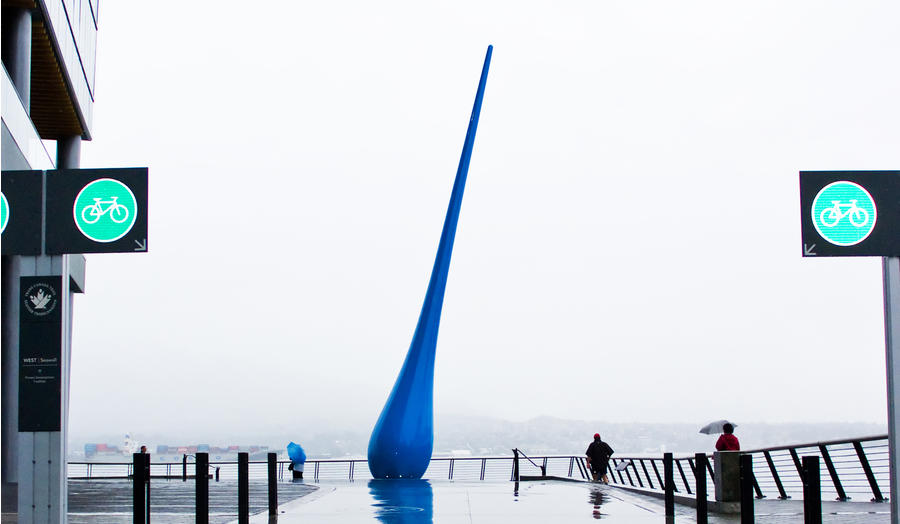It's big and it's blue: Revisiting a Calgary icon on its 10-year anniversary

It was destined for stardom from the get-go.
The Giant Blue Ring, or Travelling Light as it was intended to be known, has cemented its legacy in Calgary’s history.
Even before it was officially completed in December 2013, it turned heads, drew criticism, and became a social media celebrity.
Lake selfie… #yyc pic.twitter.com/IkYyGoIWS6
— Giant Blüe Ring (@GiantBlueRing) August 13, 2015
And that’s exactly what it was supposed to do.
“The thing about public art is that a work that is good always triggers incomprehension, criticism and grumbling among the population,” Hans Hemmert, one of the four men behind the structure, told Daily Hive Urbanized.
“Contemporary art cannot be 100% understood, that is in the nature of art.”
Inges Idee, the German-based collective that includes Hemmert, Axel Lieber, Thomas A. Schmidt and Georg Zey, brought the iconic landmark to life.
The group was chosen out of 55 other applications for the project through a competition process open to international artists.
They already had a connection to Canada established through previous work in Vancouver.

The Drop sculpture. (Inges Idee/Vancouver Convention Centre)
Very quickly, however, Travelling Light became the thing that Calgarians love to hate more than anything else before developing a cult-like following.
Former Calgary Mayor Naheed Nenshi called it awful at the time and its $471,000 price tag was criticized.
In spite of our rocky start, I thank you, and will miss you..! #ThankYouNaheed #yyc @nenshi https://t.co/0Fvq0VqMzp
— Giant Blüe Ring (@GiantBlueRing) September 13, 2021
“At the beginning, we were a bit shocked that we faced so much headwind,” Hemmert said.
“On the one hand, the argument that any child could do it and on the other hand, the criticism that a group of artists from Germany was taking the money out of Canada.”
Its purpose and intention were often, and still is, questioned.
So what’s it even supposed to be?
In the words of Inges Idee, Travelling Light takes motion as its theme and makes it experienceable.
Okay, but how?
The sculpture is almost always seen while driving past the highway. If you look at it from a different viewpoint, that changes.
From a distance, it forms a landmark that encircles the view of the city and the open countryside like a huge frame, according to the German art group.

Calgary’s “Travelling Light” blue ring art sculpture. (The City of Calgary Arts and Culture/Facebook)
To do that, they had to take various site-specific requirements into consideration.
Firstly, it was the rather unusual placement — on a bridge at the side of a four-lane highway right by the airport.
Secondly, the sculpture also had to serve as a constructive part of the bridge, meaning that it couldn’t be placed just anywhere.
Those conditions led to a design that replaced an existing streetlamp with an 18-metre-tall ring that kept the street light in its original spot.
The installation and fabrication of Travelling Light was also done entirely by local companies.
The criticism, however, didn’t deter Inges Idee from coming back.
In 2017, they made The Bone, a giant toy-like dog statue that lives outside of the Seton Professional Centre in the city’s southeast.

The Bone. (Inges Idee)
And the fact that the group gave Calgary a modern-day icon isn’t lost on them.
“We are, of course, delighted that the Blue Ring has become such a landmark in Calgary precisely because of the great discussion it has triggered,” Hemmert said.
“But we knew beforehand that this would happen; a work of art always takes time to catch on with people until the population accepts it as their own, unmistakable sign that now accompanies them in their everyday lives.”

